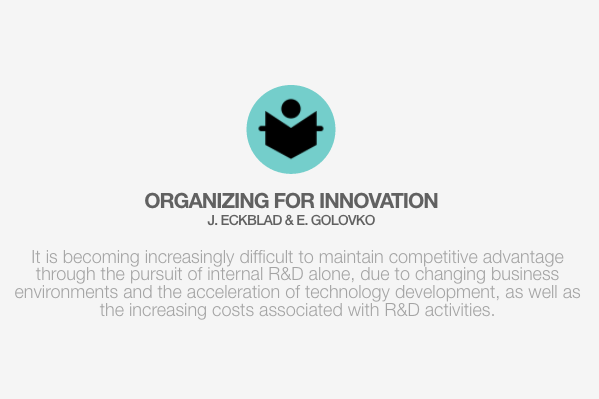Conference on Entrepreneurship & Collaboration at the University of Colorado, Boulder
Boulder was my first destination on a 5-week research exploration of corporate venturing and investment syndicate networks in the US: Boulder (CO), San Francisco (CA), Research Triangle Park (NC), Washington, DC, and New York City (NY).
Boulder, Colorado is a medium-sized city (population 300,000) nestled in a picturesque valley where the Rocky Mountains meet the Great Plains. Since 1960, Boulder has nurtured a number of embryonic industries, including organic foods (e.g., Celestial Seasonings), computer storage (e.g., StorageTek, later acquired by Sun Microsystems), missile defense (e.g., Ball Aerospace), biotech (e.g., Amgen biochemistry labs), and more recently Internet firms (too many to list here).
According to the Kauffman Foundation, Boulder also has six times more high-tech startups per capita than the US average. It ranks among the top 20 most productive US metro areas in terms of GDP and unemployment is approximately 5.4 percent, which is two points below the US average (Helm, 2014).
Boulder is home to Techstars, a startup accelerator founded in 2006 that combines investment capital with intensive mentorship of a cohort during a 3-month program. Paul Graham launched the first seed accelerator in 2005 (Y Combinator started in Cambridge, Massachusetts and later moved to Silicon Valley). Y Combinator was followed by Techstars, Seedcamp (a startup that I co-founded joined the cohort in 2009), Startupbootcamp, Tech Wildcatters, Boomtown Boulder, and HighTechXL (Eindhoven, Netherlands), among others. For deeper insight into the accelerator phenomenon, see Cohen & Hochberg (2014). I met David Cohen, a co-founder and managing partner of Techstars on the pre-conference evening. Techstars invests in more than 200 startups a year through their accelerator program — the standard deal is $20K in exchange for 6% equity (plus an optional $100K convertible debt note) with an equity back guarantee. Techstars also runs corporate programs to help source external startups that fit with a corporate’s strategic priorities (e.g. Microsoft, Disney, Barclays, Kaplan, Sprint, and R/GA). Corporate accelerators are one mode of corporate venturing (i.e., collaboration between corporate firms and startups), which is the focus of my current research. Techstars has raised a number of funds that is backed by more than 75 different investors including super angels, venture capitalists, corporate venture capitalists, and various institutional investors such as Morgan Stanley.
The conference was led by Jeff Reuer and Sharon Matusik, leading scholars in Strategy and Entrepreneurship. There I had the hair-raising opportunity to present my first working paper entitled: Searching Beyond the Horizon: Opportunity and Motive in CVC Investments. In this paper, we examine how corporate firms source knowledge from external startups using CVC Investments (one mode of corporate venturing). We investigate the interaction between the supply of investment opportunities made available to a corporate firm due to its position in the investment environment and the demand for new technological investments deriving from the perceived need to cope with technological change. Our theoretical model emphasizes the interaction between relational and attentional structures of a corporate firm. We collected longitudinal data on 217 corporate firms over a twenty-two year period that practice CVC investments (between 1990 and 2011), resulting in 4,774 firm-years. I received valuable feedback that has enabled me to further develop the paper's theoretical contribution in the intervening weeks.
Besides multiple presentations on the antecedents and performance/innovation implications of various modes of corporate venturing, other conference presentations also explored the antecedents and performance implications of alliance contracts (heterogeneous types) between collaborating firms. Jeff Reuer, Professor of Strategy and Entrepreneurship at the University of Colorado, considers alliances as a theory of acquisition failure. According to Williamson (1991), hybrids (e.g., alliances) are not predicted under uncertainty. However, formal contracts may offer administrative controls in non-equity settings that reduce uncertainty, thus favoring the establishment of an alliance with another firm. As Reuer put it, contracts provide a ‘keyhole’ into the design/structure of the relationship between firms. In my view, contracts as artefacts are an ingenious device for opening up the ‘black box’ of firm alliances/collaborations to enable researchers to observe the variation that exists within the structure of such relationships.
The Boulder conference concluded with an intriguing discussion led by Gillian Hadfield, Professor of Law and Economics at the University of Southern California. Hadfield pointed to law (regulations & oversight) as the number one source of business complexity according to global executives surveyed (KPMG, 2011). Hadfield reasons that global supply chains, which are increasingly integrated, dynamic, customized, and ephemeral, have effectively de-verticalized most firms. This increased reliance on external suppliers has inflated the demand for legal services — Not only has the number of contracts grown, but the complexity of contracts is escalating given the intricacies of logistics, finance, and regulations. In addition, with the movement of knowledge workers from firm to firm becoming more frequent, among other factors, intellectual property (IP) risks are rising. Hadfield believes that existing legal frameworks are ripe for disruption as the system has become overly complex, costly, and unresponsive to today’s business environment.
A salient question that arises based on my current research interests: Are high-quality startups selecting out of complex governance forms? In other words, are promising startups avoiding corporate firms that practice overly formal contractual relationships?
REFERENCES
Cohen, S., & Hochberg, Y. V. (2014). Accelerating startups: The seed accelerator phenomenon.
Helm, B. (2014, January). How Boulder Became America's Startup Capital: An unlikely story of tree-huggers, commies, eggheads, and gold. Retrieved from https://www.inc.com/magazine/201312/boulder-colorado-fast-growing-business.html.
KPMG (2011). KPMG International Annual Review 2010: Cutting through complexity. Retrieved from https://home.kpmg.com/content/dam/kpmg/pdf/2011/03/KPMG-International-Annual-Review-2010.pdf
Williamson, O. E. (1991). Comparative economic organization: The analysis of discrete structural alternatives. Administrative Science Quarterly, 269-296.














